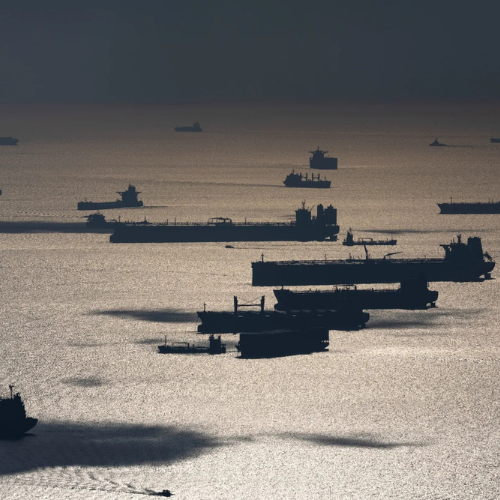Ukrainian intelligence has taken a bold step by shedding light on a secretive fleet of oil tankers that fuels Russia’s and Iran’s controversial activities. The Main Intelligence Directorate (HUR) of Ukraine’s Defense Ministry has unveiled critical details about 238 vessels that are part of a “shadow fleet,” helping these countries export oil despite international sanctions.
This information is now available on the War & Sanctions portal, a unique resource that tracks violations and exposes shady operations worldwide. The data reveals how these tankers play a key role in funding harmful activities, including weapons development, terrorism, and even nuclear programs.
How the Shadow Fleet Operates
The “shadow fleet” consists of over 1,000 tankers, making up 17% of the world’s oil transport fleet. Many of these vessels are outdated and poorly maintained, creating risks for both the environment and maritime safety. Their ownership is often hidden through complex, shady arrangements, and they fly flags of convenience from countries that overlook their illegal activities.
Together, these tankers have the capacity to carry over 100 million tonnes of oil. Their main goal is to hide the origin of their cargo by using tricks such as transferring oil from one ship to another (STS transfers) and falsifying shipping documents. This allows them to bypass sanctions and restrictions that prevent the sale of oil from Russia and Iran.
Since the beginning of Russia’s full-scale invasion of Ukraine in February 2022, there have been over 50 incidents involving these tankers worldwide. These include collisions and spills in narrow shipping lanes, such as in the Denmark Straits and Malaysian waters, endangering both ecosystems and global trade routes.
Funding Dangerous Activities
The stakes are high because oil exports are a major source of income for Russia and Iran. In 2023 alone, Russia earned $188 billion and Iran $53 billion from oil sales. These revenues are being used to support nuclear weapons programs, develop advanced missiles and drones, and fund terrorist organizations and criminal networks.
Russia lost many of its traditional European oil buyers due to Western sanctions. In response, it expanded its shadow fleet to transport oil to new markets in Asia, especially China and India. These tankers violate G7+ restrictions, which set price caps and embargoes on Russian oil.
EU’s Hard Hit: New Sanctions Slam Russia’s Secret Fleet and Chinese Firms
Additionally, Russia has partnered with Iran to boost its shadow fleet. Some tankers that once transported Iranian oil have been repurposed to carry Russian oil. Since 2022, Russia has spent approximately $10 billion on building and expanding this fleet.
Environmental groups like Greenpeace have also raised alarms, noting that the shadow fleet poses significant threats to marine ecosystems. For example, tankers operating in the Baltic Sea are at risk of causing oil spills, which would have devastating effects on the environment.
A Global Database of Violations
The War & Sanctions portal, developed by Ukrainian intelligence, provides a detailed and verified database of these shadow tankers and their activities. The portal categorizes tankers based on their operators, origins, and violations. This allows the public and authorities worldwide to see how these vessels are bypassing sanctions and threatening global safety.
The Dark Fleet: Sanctioned Oil Transforming Energy Markets
The database lists 238 tankers involved in transporting oil from Russia and Iran to Asian markets like China and India. These vessels frequently use STS transfers in the Black and Mediterranean Seas, near European waters, to hide the origins of their cargo. Some even transport oil to European Union countries in direct violation of the embargo.
What makes this portal unique is its comprehensive coverage. In addition to tracking shadow tankers, it also documents the use of Western-made components in Russian weapons, stolen Ukrainian cultural treasures, and even vessels involved in transporting weapons and stolen goods.
By uncovering the murky dealings of the shadow fleet, Ukraine’s intelligence agency has given the world a clearer picture of how oil revenues are fueling aggression, terrorism, and other harmful activities. This groundbreaking initiative underscores the importance of transparency in holding violators accountable.


